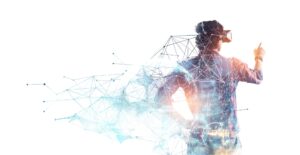
Blockchain Digital Twins
The value provided by DTs relies on their fidelity in representation. A dynamic DT maintains a digital representation of the current state of the physical object. Blockchains provide trust assurance mechanisms, particularly where multiple parties are involved. For users of DTs to benefit from this digital representation, they must trust that it provides an adequate representation for their purposes. The expected life cycle operations of the IoT, blockchain, and DT need to be considered to develop economically useful blockchain digital twin (BDT) models. Blockchains can be used for assurance of authenticity of actions by DT. BDTs do not exist in isolation, but rather within a DT environment (DTE). A metaverse as a collection of virtual worlds may include virtual worlds that are DTEs ie capable of supporting the operation of DTs within them. A DTE may include multiple DTs of different objects to enable interactions between these objects to be evaluated in both virtual reality and mixed reality cases.
To populate DTEs with multiple DTs requires industrialized tooling to support the rapid creation of DTs.The industrialization of DT creation requires frameworks, architectures, and standards to enable interoperability between DTs and DTEs. While blockchains developed from fintech applications, BDT applications will have different requirements for blockchain features and performance – e.g. in notions of privacy.
For further information refer to Wright, S. A. (2023). IoT Blockchains for Digital Twins. In Role of 6G Wireless Networks in AI and Blockchain-Based Applications (pp. 57-79). IGI Global.
